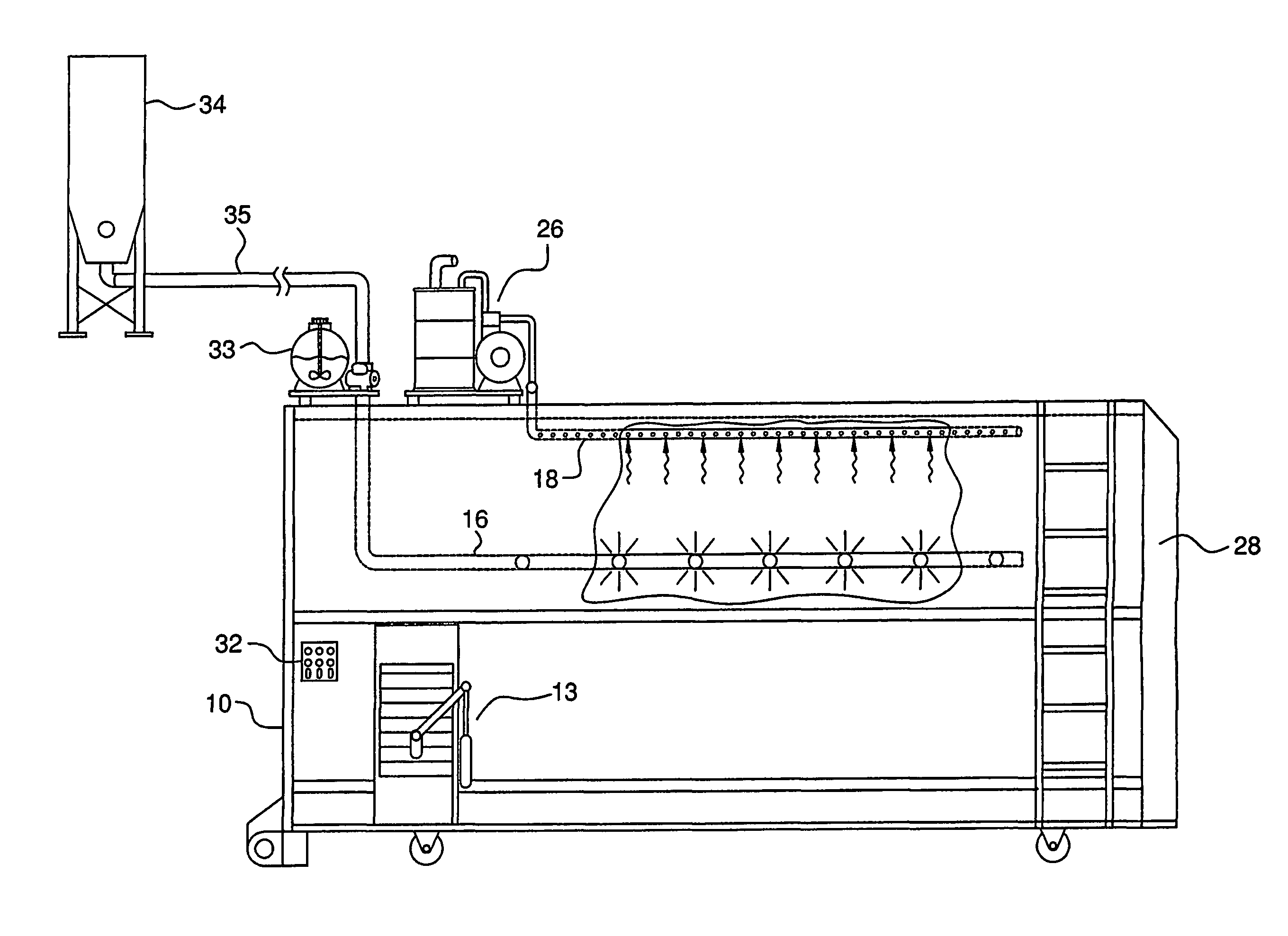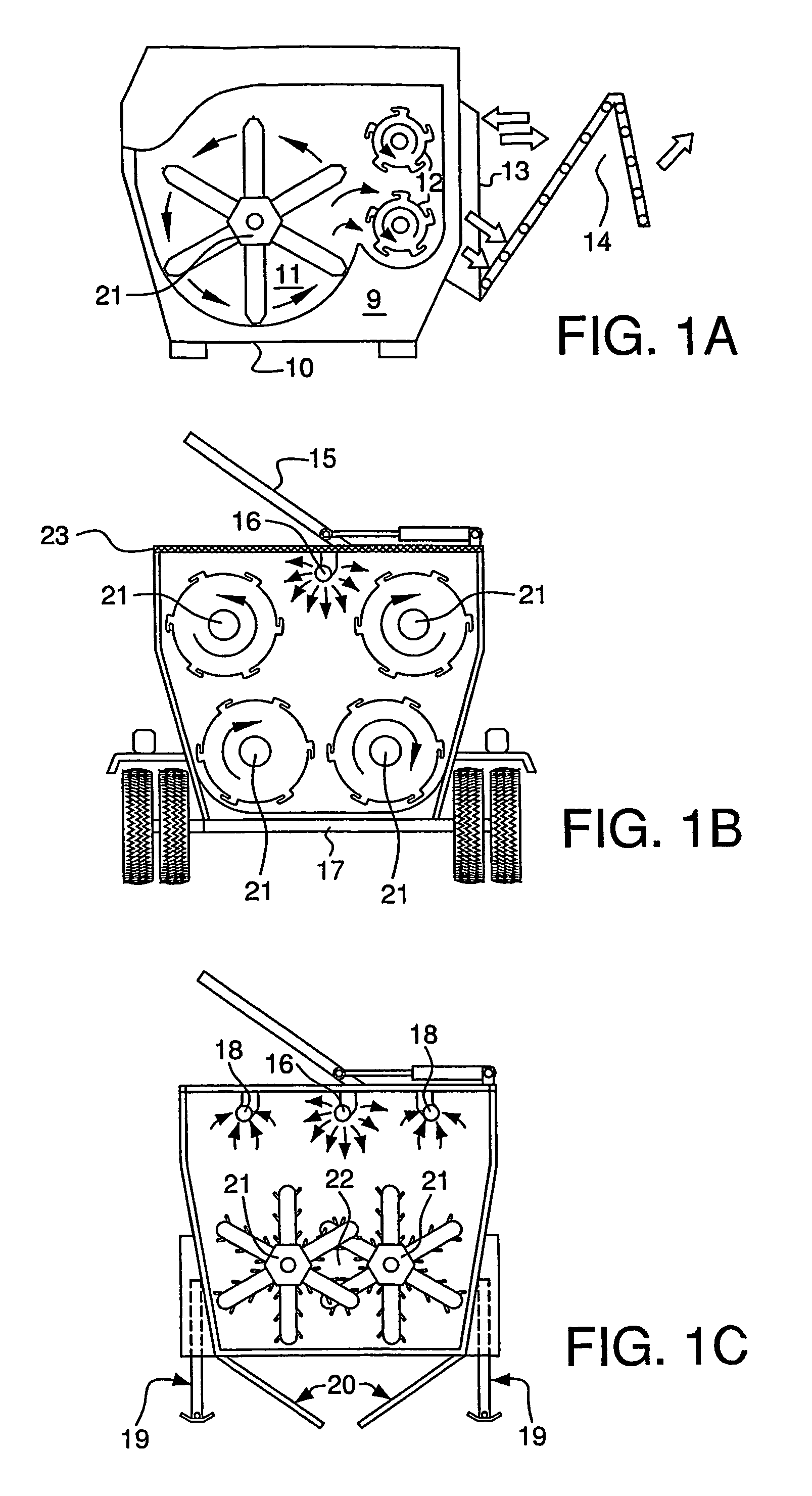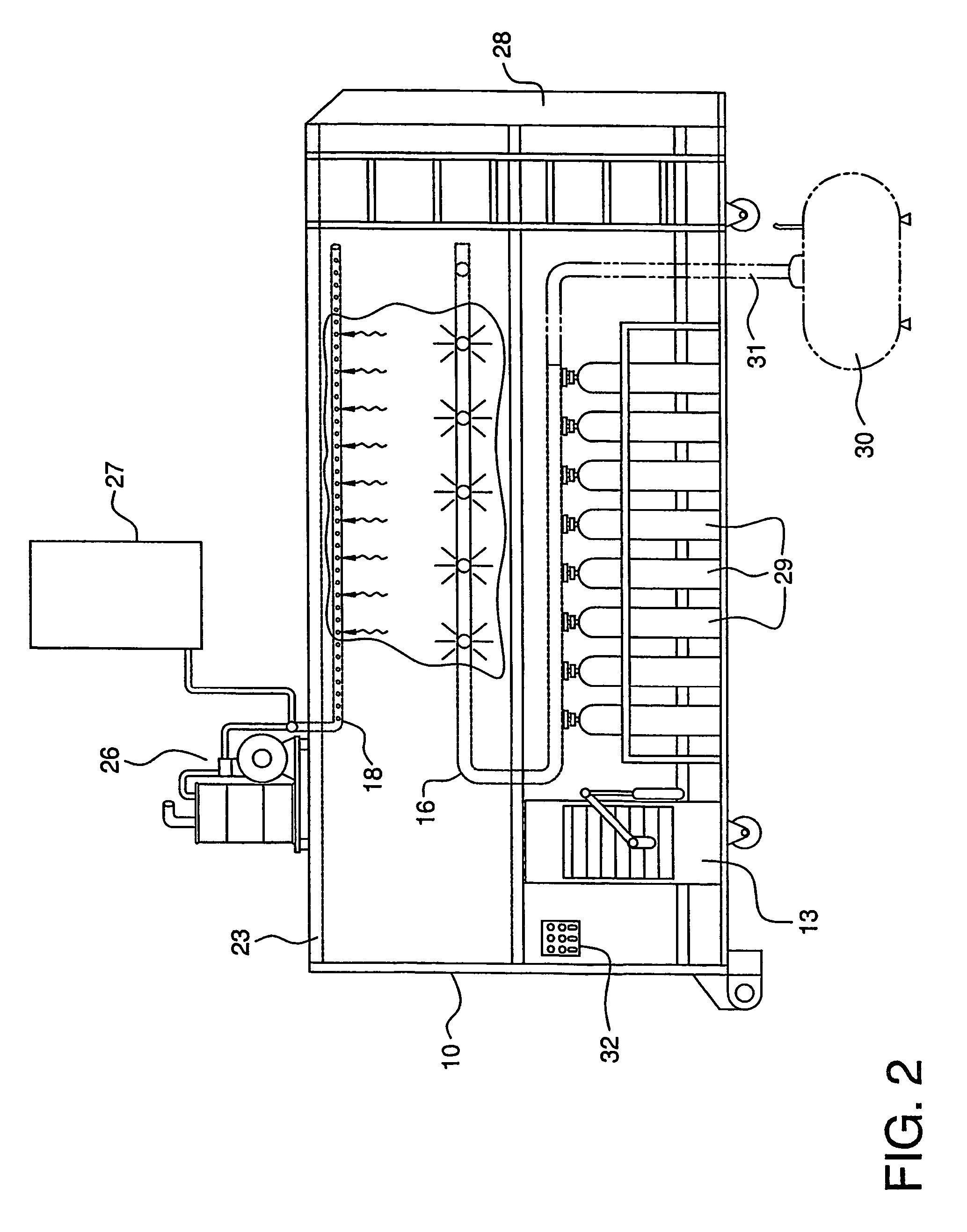Process and apparatus for further processing of sewage sludge and other materials to reduce pathogens and toxins
a technology of sewage sludge and other materials, applied in the field of further processing of sewage sludge and other contaminated substrates, can solve the problems of not being able to achieve the level of treatment. , to achieve the effect of reducing pathogenic organisms and speeding up the reaction
- Summary
- Abstract
- Description
- Claims
- Application Information
AI Technical Summary
Benefits of technology
Problems solved by technology
Method used
Image
Examples
example 1
[0073]Contaminated sludge from a New England harbor was dredged using conventional means. The sludge was heat dried to remove residual water. 56.1 grams of the dried sludge was placed in a pressure treatment vessel and the vessel was charged with 1000 ml of anhydrous ammonia. The temperature was increased to 40° C. and held there for 30 minutes while stirring at 800 rpms. The ammonia was drained by filtration from the sludge and the sludge analyzed for residual organics. Table I lists the results.
[0074]
ContaminantStarting Material (ppm)Washed Material (ppm)PCB9453338Anthracene7.2NDBenzopyrene8.5ND1,3 dichlorobenzene314.7Pyrene145.4
example 2
[0075]The solid material from example 1 was washed a second time using the same procedure described in example 1. The twice washed material had a residual PCB level of 23 ppm.
example 3
[0076]The solid material from example 2 was washed a third time using the same procedure as described in example 1. The thrice washed material had a residual PCB level of 0.2 ppm.
PUM
| Property | Measurement | Unit |
|---|---|---|
| temperatures | aaaaa | aaaaa |
| temperatures | aaaaa | aaaaa |
| temperature | aaaaa | aaaaa |
Abstract
Description
Claims
Application Information
 Login to View More
Login to View More - R&D
- Intellectual Property
- Life Sciences
- Materials
- Tech Scout
- Unparalleled Data Quality
- Higher Quality Content
- 60% Fewer Hallucinations
Browse by: Latest US Patents, China's latest patents, Technical Efficacy Thesaurus, Application Domain, Technology Topic, Popular Technical Reports.
© 2025 PatSnap. All rights reserved.Legal|Privacy policy|Modern Slavery Act Transparency Statement|Sitemap|About US| Contact US: help@patsnap.com



